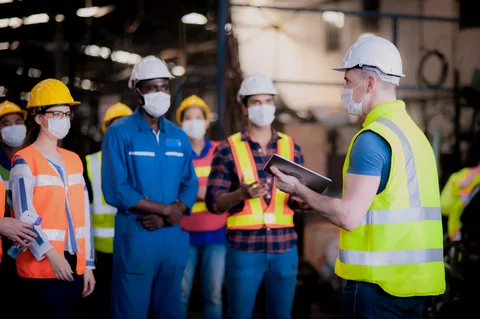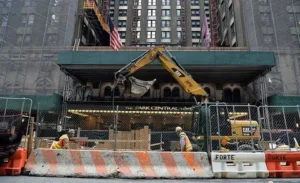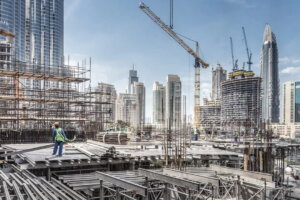Introduction
In New York City dense vertical urban environment, scaffolding plays a vital role. It enables façade repairs, high rise construction, pedestrian protection and regulatory compliance. For contractors, property managers and building owners alike, choosing the right scaffolding companies in NYC become a strategic decision that affects safety, project timeline and legal exposure.
Construction Infrastructure and Urban Access in NYC
The macro context here is the urban access ecosystem the network of services, systems and regulations surrounding construction access in NYC. Within that, scaffolding companies are pivotal providers. They translate design into build on site solutions, navigate logistics like street closures and sidewalk sheds, and align with the New York City Department of Buildings DOB regulations.
Core Entities and Attributes
Scaffolding Companies
These are firms specializing in the design, rental, installation, inspection and removal of scaffold systems. Key attributes include:
- Service range: sidewalk sheds, pipe scaffolding, system scaffolding, stair towers, hoists
- Engineering and permitting capability: providing drawings, DOB filings, load calculations
- Safety protocols: OSHA and NYC compliance, trained crews, inspection regimes
- Urban logistics awareness: street access, traffic management, borough specific constraints
Building and Site Profiles
- High rise towers: require modular system scaffolds, hoists, long term rental
- Historic façades: often require custom scaffolding, podiums, preservation sensitive systems
- Residential and low rise: simpler scaffold types but still subject to sidewalk protection
Regulatory and Safety Framework
The DOB enforces permits for scaffold types, duration limits, sidewalk shed requirements and public safety standards.
- Sidewalk shed rules: critical for pedestrian safety during façade work
- Scaffold duration: projects must comply with inspection schedules or removal deadlines
- Load ratings and design documentation: essential for system scaffolds used in large builds
Adjacent Contexts and Semantic Layers
Access Challenges in NYC
- Narrow lots, high traffic sidewalks, limited staging areas
- Tight project timelines with multiple trades on site
- Pedestrian safety, falling object risks and visual obstructions
Project Lifecycle Integration
-
Preconstruction: site survey, drawings, permitting
-
Construction: installation, inspection, use
-
Completion: dismantling, site cleanup, permit closeout
Sustainability and Cost Efficiency
-
Reusable scaffold components reduce material waste
-
Efficient scheduling avoids rental overages
-
Detailed quotes prevent budget surprises
Choosing the Right Scaffolding Company in NYC
- Verify Licensing and Insurance: Ensure the contractor is approved by DOB, carries general liability and workers comp insurance.
- Match Experience to Project Type: Choose a company with proven results on high rise, historic or commercial structures.
- Confirm Engineering and Documentation: Look for stamped scaffold drawings, weight calculations and compliance records.
- Review Safety Records: Ask about OSHA violations, safety certifications and onsite inspection protocols.
- Get Transparent Cost Estimates: Quotes should separate scaffold rental, labor, permitting, dismantle and optional extras.
- Ensure Local Logistics Knowledge: Firms must be familiar with NYC site conditions, staging access and borough guidelines.
Why It Matters
Choosing a scaffolding company in NYC is not just about equipment. It is about aligning your project with a partner who brings engineering precision, regulatory understanding and logistical foresight. In a city where scaffolding lines nearly every block, the company behind the structure makes all the difference between delay and delivery, exposure and protection.
What do scaffolding companies in NYC provide
They offer rental, installation, engineering, and removal of scaffold systems for buildings and construction projects.
Are scaffolding permits required in NYC
Yes, permits are mandatory for all scaffolding and sidewalk sheds as per the NYC Department of Buildings.
What is a sidewalk shed
A protective structure built over sidewalks to shield pedestrians during nearby construction or repair work.
How long can scaffolding stay up in NYC
Scaffolding can remain for as long as needed, but extended periods may require permit renewals or inspections.
What types of scaffolding are used in NYC construction
Pipe scaffolding, system scaffolds, stair towers, and suspended platforms are commonly used.
Do scaffolding companies provide engineering drawings
Yes, reputable firms provide stamped scaffold design drawings required for permits and safety approval.
Can scaffolding be used for historic building repairs
Yes, companies offer preservation-sensitive solutions for landmark and heritage buildings.
Are scaffolding companies in NYC licensed
Yes, firms must be licensed and insured to operate legally and meet DOB safety standards.
What factors affect scaffolding costs
Costs depend on scaffold type, height, location, rental duration, and complexity of the build.
How do I choose a good scaffolding company in NYC
Check for licensing, safety record, DOB experience, transparent pricing, and project-specific expertise.
Conclusion
Scaffolding companies in NYC operate at the intersection of construction access, public safety and regulatory compliance. Their work supports not just the physical construction but also the legal and operational framework of your project. Selecting the right scaffold provider ensures your project is safe, compliant and on schedule making them an indispensable ally in the built environment of New York City.



